1z0-851_formatted
Number
Passing Score
Time Limit
File Version
: 000-000
: 800
: 120 min
: 1.0
Java Standard Edition 6 Programmer Certified
Professional Exam
Practice Test
Version: 4.2
Oracle 1z0-851: Practice Exam
�
Exam A
QUESTION 1
Given a pre-generics implementation of a method:
11. public static int sum(List list) {
12. int sum = 0;
13. for ( Iterator iter = list.iterator(); iter.hasNext(); ) {
14. int i = ((Integer)iter.next()).intValue();
15. sum += i;
16. }
17. return sum;
18. }
What three changes allow the class to be used with generics and avoid an unchecked warning? (Choose
three.)
这三个变化是什么让这个类可以使用泛型和避免未经检查的警告?(选择三。)
Remove line 14.
Replace line 14 with "int i = iter.next();".
Replace line 13 with "for (int i : intList) {".
Replace line 13 with "for (Iterator iter : intList) {".
Replace the method declaration with "sum(List intList)".
Replace the method declaration with "sum(List intList)".
A.
B.
C.
D.
E.
F.
Answer: ACF
Section: (none)
Explanation/Reference:
Explanation:
QUESTION 2
A programmer has an algorithm that requires a java.util.List that provides an efficient implementation of
add(0, object), but does NOT need to support quick random access. What supports these requirements?
A.
B.
C.
D.
java.util.Queue
java.util.ArrayList
java.util.LinearList
java.util.LinkedList
Answer: D
Section: (none)
Explanation/Reference:
Explanation:
QUESTION 3
Given:
11. // insert code here
�
12. private N min, max;
13. public N getMin() { return min; }
14. public N getMax() { return max; }
15. public void add(N added) {
16. if (min == null || added.doubleValue() < min.doubleValue())
17. min = added;
18. if (max == null || added.doubleValue() > max.doubleValue())
19. max = added;
20. }
21. }
Which two, inserted at line 11, will allow the code to compile? (Choose two.)
A.
B.
C.
D.
E.
F.
public class MinMax {
public class MinMax {
public class MinMax {
public class MinMax {
public class MinMax {
public class MinMax {
Answer: DF
Section: (none)
Explanation/Reference:
Explanation:
QUESTION 4
Given:
12. import java.util.*;
13. public class Explorer2 {
14. public static void main(String[] args) {
15. TreeSet s = new TreeSet();
16. TreeSet subs = new TreeSet();
17. for(int i = 606; i < 613; i++)
18. if(i%2 == 0) s.add(i);
19. subs = (TreeSet)s.subSet(608, true, 611, true);
20. s.add(629);
21. System.out.println(s + " " + subs);
22. }
�
23. }
What is the result?
A.
B.
C.
D.
E.
F.
Compilation fails.
An exception is thrown at runtime.
[608, 610, 612, 629] [608, 610]
[608, 610, 612, 629] [608, 610, 629]
[606, 608, 610, 612, 629] [608, 610]
[606, 608, 610, 612, 629] [608, 610, 629]
Answer: E
Section: (none)
Explanation/Reference:
Explanation:
QUESTION 5
Given:
1. public class Score implements Comparable {
2. private int wins, losses;
3. public Score(int w, int l) { wins = w; losses = l; }
4. public int getWins() { return wins; }
5. public int getLosses() { return losses; }
6. public String toString() {
7. return "<" + wins + "," + losses + ">";
8. }
9. // insert code here
10. }
Which method will complete this class?
A.
B.
C.
D.
public int compareTo(Object o){/*more code here*/}
public int compareTo(Score other){/*more code here*/}
public int compare(Score s1,Score s2){/*more code here*/}
public int compare(Object o1,Object o2){/*more code here*/}
Answer: B
Section: (none)
Explanation/Reference:
Explanation:
QUESTION 6
Given:
11. public class Person {
�
12. private name;
13. public Person(String name) {
14. this.name = name;
15. }
16. public int hashCode() {
17. return 420;
18. }
19. }
Which statement is true?
A. The time to find the value from HashMap with a Person key depends on the size of the map.
B. Deleting a Person key from a HashMap will delete all map entries for all keys of type Person.
C. Inserting a second Person object into a HashSet will cause the first Person object to be removed as a
duplicate.
D. The time to determine whether a Person object is contained in a HashSet is constant and does NOT
depend on the size of the map.
Answer: A
Section: (none)
Explanation/Reference:
Explanation:
QUESTION 7
Given:
5. import java.util.*;
6. public class SortOf {
7. public static void main(String[] args) {
8. ArrayList a = new ArrayList();
9. a.add(1); a.add(5); a.add(3);
11. Collections.sort(a);
12. a.add(2);
13. Collections.reverse(a);
14. System.out.println(a);
15. }
16. }
What is the result?
A. [1, 2, 3, 5]
�
B.
C.
D.
E.
F.
G.
[2, 1, 3, 5]
[2, 5, 3, 1]
[5, 3, 2, 1]
[1, 3, 5, 2]
Compilation fails.
An exception is thrown at runtime.
Answer: C
Section: (none)
Explanation/Reference:
Explanation:
QUESTION 8
Given
11. public interface Status {
12. /* insert code here */ int MY_VALUE = 10;
13. } Which three are valid on line
12?
(Choose three.)
A.
B.
C.
D.
E.
F.
G.
final
static
native
public
private
abstract
protected
Answer: ABD
Section: (none)
Explanation/Reference:
Explanation:
QUESTION 9
Given:
5. class Atom {
6. Atom() { System.out.print("atom "); }
7. }
8. class Rock extends Atom {
9. Rock(String type) { System.out.print(type); }
10. }
11. public class Mountain extends Rock {
�
12. Mountain() {
13. super("granite ");
14. new Rock("granite ");
15. }
16. public static void main(String[] a) { new Mountain(); }
17. }
What is the result?
A.
B.
C.
D.
E.
F.
Compilation fails.
atom granite
granite granite
atom granite granite
An exception is thrown at runtime.
atom granite atom granite
Answer: F
Section: (none)
Explanation/Reference:
Explanation:
QUESTION 10
Click the Exhibit button. Which three statements are true? (Choose three.)
�
A.
B.
C.
D.
E.
F.
Compilation fails.
The code compiles and the output is 2.
If lines 16, 17 and 18 were removed, compilation would fail.
If lines 24, 25 and 26 were removed, compilation would fail.
If lines 16, 17 and 18 were removed, the code would compile and the output would be 2.
If lines 24, 25 and 26 were removed, the code would compile and the output would be 1.
Answer: BEF
Section: (none)
Explanation/Reference:
Explanation:
QUESTION 11
Given:
10. class Line {
11. public class Point { public int x,y;}
12. public Point getPoint() { return new Point(); }
13. }
14. class Triangle {
15. public Triangle() {
16. // insert code here
17. }
18. }
Which code, inserted at line 16, correctly retrieves a local instance of a Point object?
A.
B.
C.
D.
Point p = Line.getPoint();
Line.Point p = Line.getPoint();
Point p = (new Line()).getPoint();
Line.Point p = (new Line()).getPoint();
Answer: D
Section: (none)
Explanation/Reference:
Explanation:
QUESTION 12
Given:
11. class Alpha {
12. public void foo() { System.out.print("Afoo "); }
13. }
14. public class Beta extends Alpha {
�
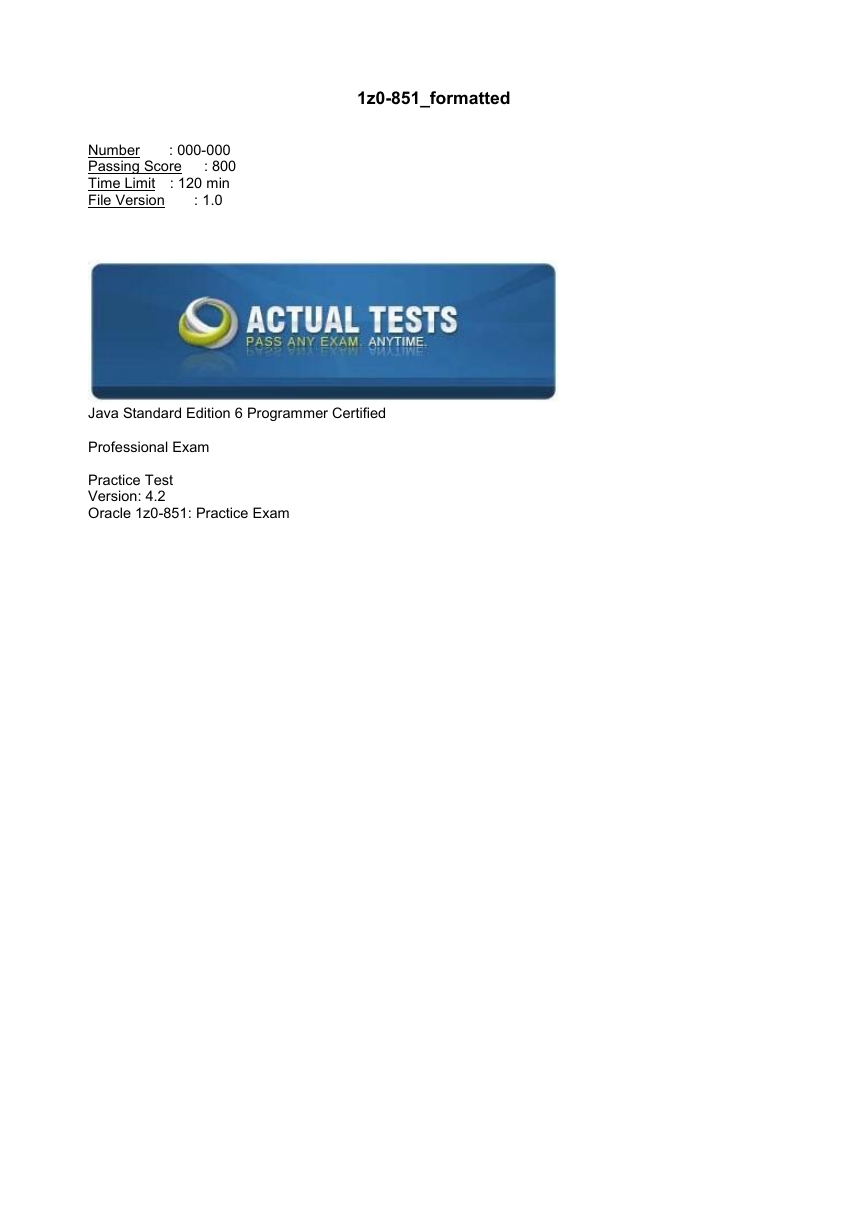
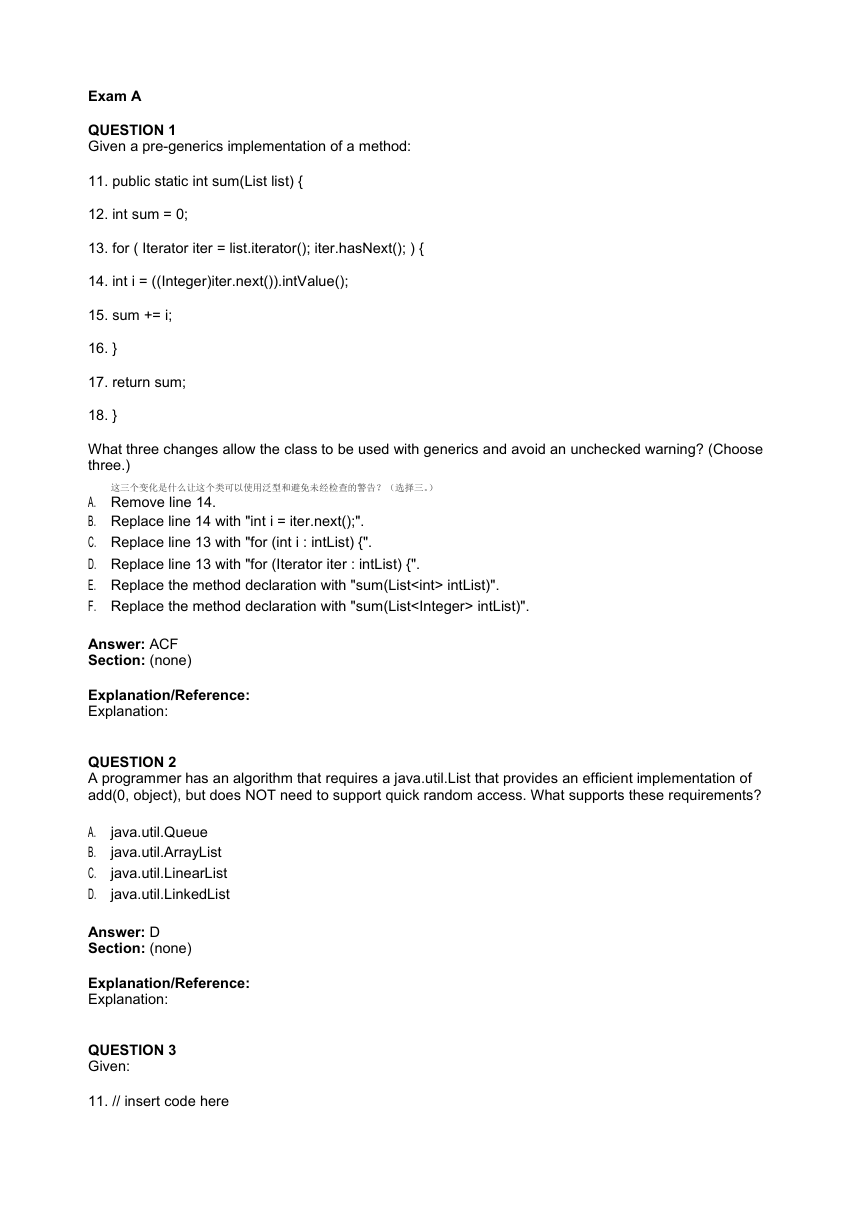
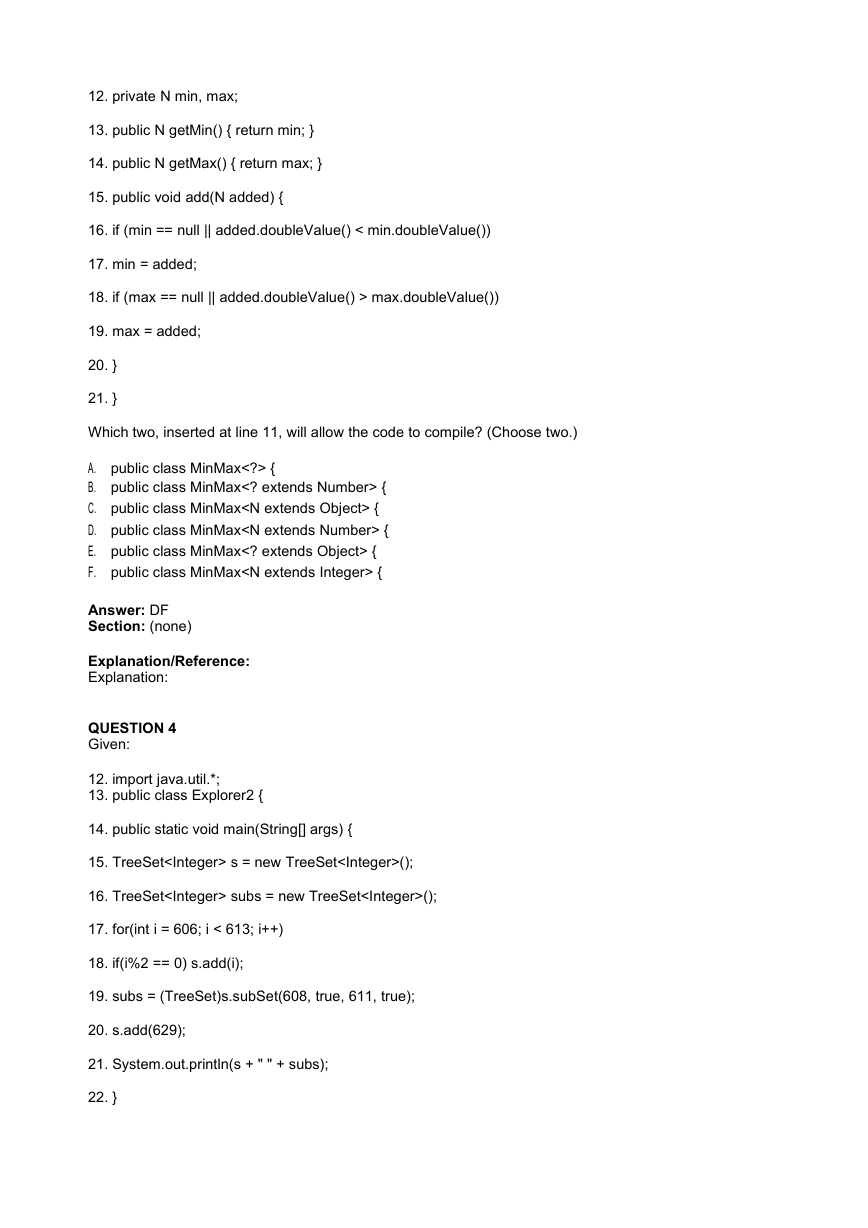
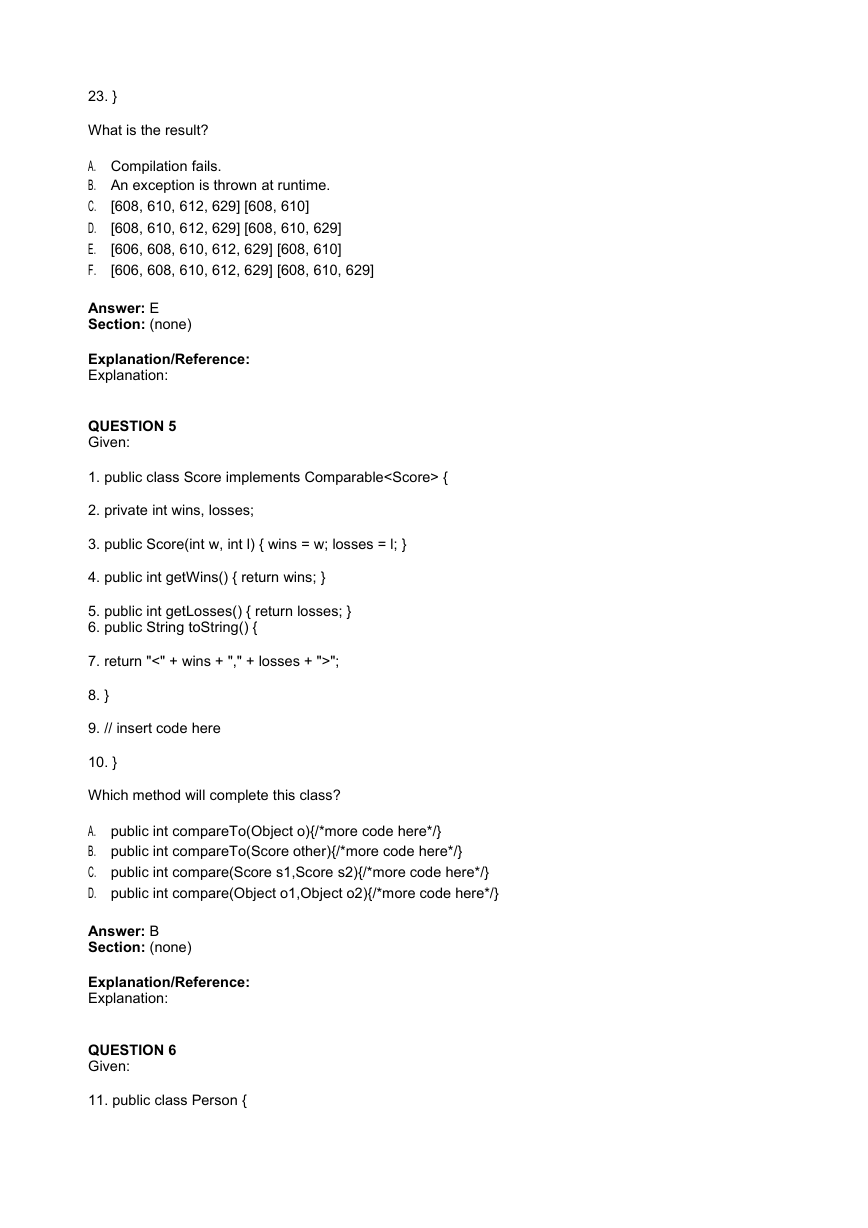
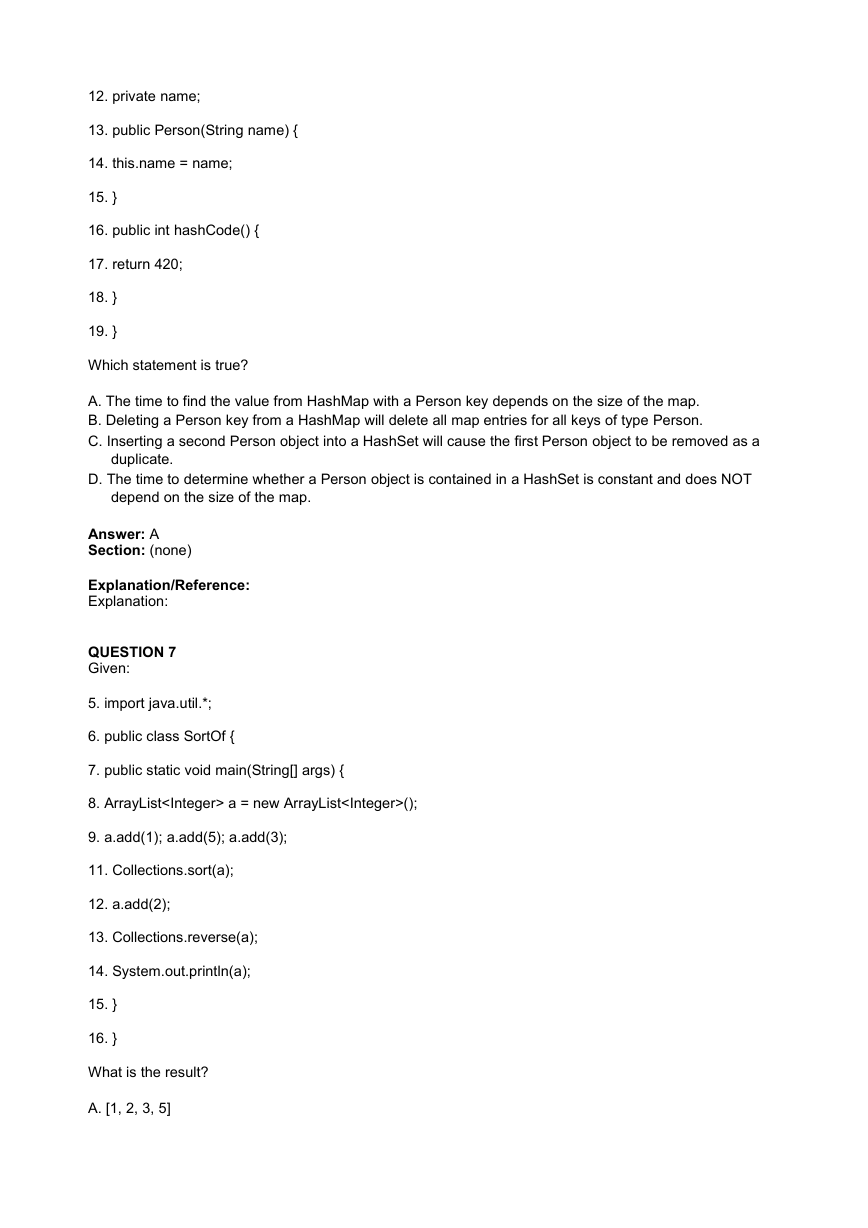
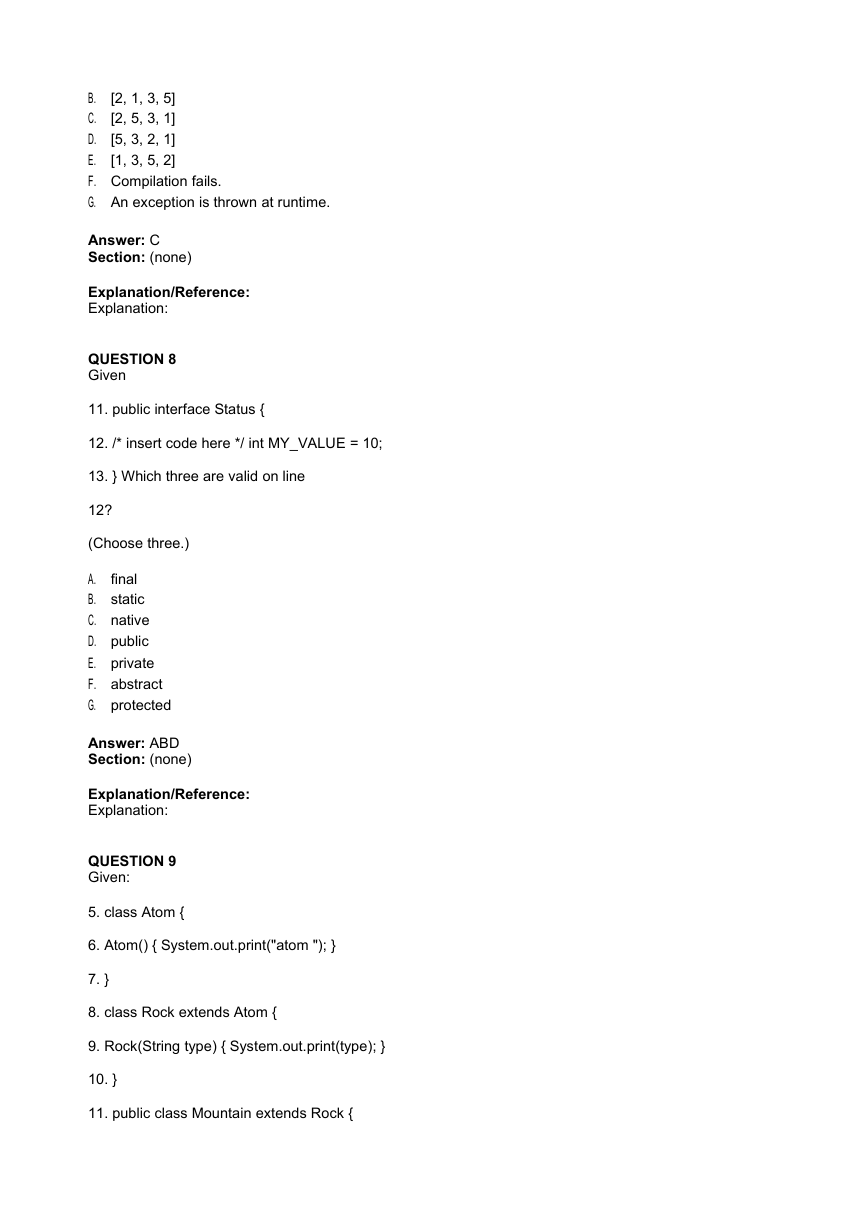
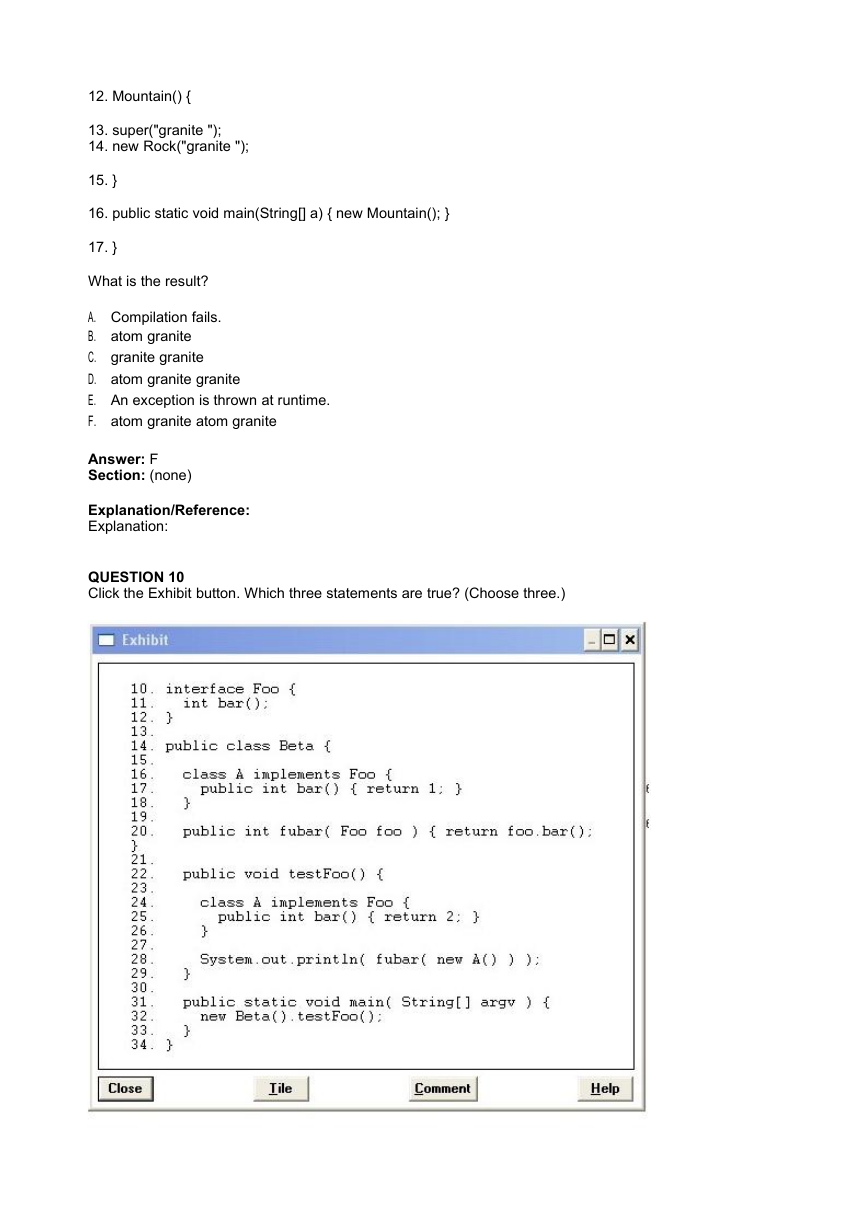









 2023年江西萍乡中考道德与法治真题及答案.doc
2023年江西萍乡中考道德与法治真题及答案.doc 2012年重庆南川中考生物真题及答案.doc
2012年重庆南川中考生物真题及答案.doc 2013年江西师范大学地理学综合及文艺理论基础考研真题.doc
2013年江西师范大学地理学综合及文艺理论基础考研真题.doc 2020年四川甘孜小升初语文真题及答案I卷.doc
2020年四川甘孜小升初语文真题及答案I卷.doc 2020年注册岩土工程师专业基础考试真题及答案.doc
2020年注册岩土工程师专业基础考试真题及答案.doc 2023-2024学年福建省厦门市九年级上学期数学月考试题及答案.doc
2023-2024学年福建省厦门市九年级上学期数学月考试题及答案.doc 2021-2022学年辽宁省沈阳市大东区九年级上学期语文期末试题及答案.doc
2021-2022学年辽宁省沈阳市大东区九年级上学期语文期末试题及答案.doc 2022-2023学年北京东城区初三第一学期物理期末试卷及答案.doc
2022-2023学年北京东城区初三第一学期物理期末试卷及答案.doc 2018上半年江西教师资格初中地理学科知识与教学能力真题及答案.doc
2018上半年江西教师资格初中地理学科知识与教学能力真题及答案.doc 2012年河北国家公务员申论考试真题及答案-省级.doc
2012年河北国家公务员申论考试真题及答案-省级.doc 2020-2021学年江苏省扬州市江都区邵樊片九年级上学期数学第一次质量检测试题及答案.doc
2020-2021学年江苏省扬州市江都区邵樊片九年级上学期数学第一次质量检测试题及答案.doc 2022下半年黑龙江教师资格证中学综合素质真题及答案.doc
2022下半年黑龙江教师资格证中学综合素质真题及答案.doc